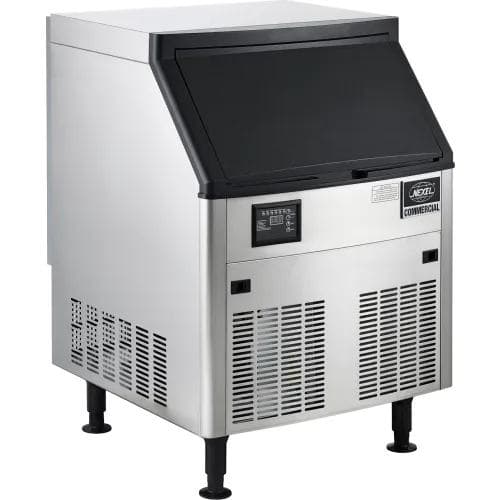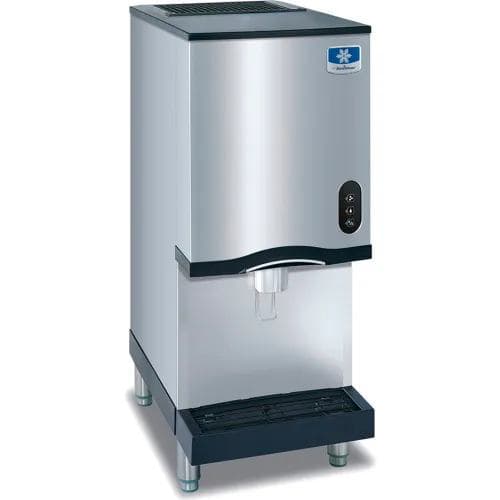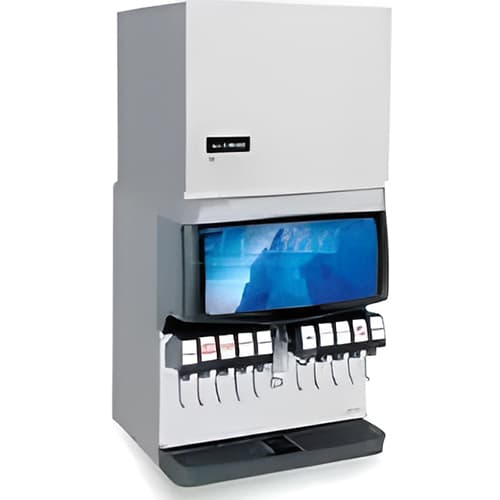Whether you work in food service, hospitality, or facility management, having a reliable supply of ice is absolutely essential. From restaurants and hotels, to simply overseeing an office break room, a lack of ice (or a slow, clunky, and outdated commercial ice maker) can be a real downer for employees and guests. And as we all continue to deal with rising temperatures, stressed AC units, and longer summers year after year, the pressure to deliver more ice, more efficiently, is definitely on.
But where do you even start? There are a lot of considerations to take into account when choosing commercial ice machines, from the size and scale of the ice production to the type of ice being delivered. It could be full-sized cubes, crushed ice, flakes, or even specially-shaped “cubes.” Well, let’s start with some basic considerations.
Exactly How Much Ice Do You Need?
Before diving into all the technical specs of the various ice makers on the market, let’s quickly look at probably the biggest deciding factor in your next ice maker; namely, just how much ice do you need? After all, getting a top-of-the-range commercial ice machine is all well and good, but if it’s just not pumping out a large and reliable ice supply, it’s a waste of space and money. You want to strike the balance between quality and quantity of the ice being produced, and the cost involved. Here’s what you should consider in your decision-making:
Daily ice consumption:
This is the big one. How much ice, on average, are you using every day? After all, there are all kinds of variables involved, and daily consumption can differ. Well, there are some quick calculations you can do. Let’s look at hotels for this example.
On average, hotel guests typically consume 3–5 pounds of ice per day, although this can change based on seasons. Now, what’s your average occupancy? You should have these figures on hand, but a handy calculation is the total number of guests divided by the number of days in a given period.
Therefore, your daily ice consumption is average ice use per guest x average occupancy. So if your hotel has, say, 100 rooms with a 75% occupancy rate, and each guest uses 4 pounds per day, then you’re looking at a machine that can easily handle 300 lbs of ice each day.
However, that’s not the only factor. Not all facilities offer the same amenities. So you should also look into things like:
Type of establishment:
Restaurants, bars, hotels, and healthcare facilities will all have different ice demands.
Menu offerings:
What’s on yours? For example, if you’re offering primarily iced beverages and cocktails, your ice demands will be higher than a menu that has limited drink options.
Special events/catering services:
How many do you provide, and how often? These special events can have an impact on your ice consumption.
Location:
If you’re in a place that’s always hot and sunny, your requirements for ice may be different than a place that has changing seasons, or is in a colder climate most of the time.
A Note on The Speed of Ice Production
When you are ready to evaluate ice makers, you'll encounter the term "Machine Heads." These play a crucial part in your ice production rate. An ice machine head is the part of the ice machine that actually produces the ice; the workhorse, so to speak. In fact, it’s so important that it can be selected separately from the storage bin, which gives you greater flexibility in customizing your commercial ice maker.
When making your choice, consider your peak demand periods. You know what they are, you want a machine that can handle the pressure. Also, recovery time is a factor, so look at how quickly the machine can replenish ice after heavy use. Finally, the ambient temperature around the machine will decrease production rates in warmer climates.
Capacity: A Fine Balance of Production and Storage
Obviously, the rate at which you can produce ice is crucial, but you have to balance that with how much ice the storage bin itself can hold. For example, a fast but small ice maker is going to leave a lot of people upset if they’re waiting in line for the machine to replenish. Like machine Heads, storage bins can often be purchased separately, allowing you to mix and match for the perfect combination.
Choosing the Right Type of Ice Maker
Now let’s look at the kind of ice machine/maker that’s available to you. Depending on the amount of space you have at hand, the placement of the machine, and the work demands you put upon it, you have three main types to consider (note, this is separate from the way the ice is actually cooled, which we’ll touch on in a moment).
Types Of Ice Makers
1. Under-Counter Ice Makers
Under-Counter Ice Makers: Ideal for smaller establishments and even residences (home bars for example) an under bar ice machine fits neatly beneath standard countertops. They're usually selected for bars, cafes, office break rooms, or anywhere else that would consider space a premium.
PROS: Small, convenient, accessible, lower cost.
CONS: Lower production and storage capacities.
2. Countertop Ice Makers
Countertop Ice Makers: An even more compact unit than under-counter, a counter ice machine is not going to pump out a ton of ice quickly. They’re commonly put on counters or tables in self-serve areas, hotel rooms, convenience stores, and in healthcare facilities. They are also good as a backup.
PROS: Very small, convenient, accessible, and budget-friendly.
CONS: Extremely low production and storage capacities.
3. Free-standing Ice Makers:
Free-standing Ice Makers: These are the big boys on the block. For any facility with a need for dependable, high-volume ice production, a large ice maker machine is ideal in hotels, restaurants, and other establishments that require consistent, heavy ice production. They offer the highest production and storage capacities on the market.
PROS: Fast ice production, heavy volume, large storage capacity.
CONS: The most expensive option, more maintenance costs.
How Will The Ice Be Cooled?
Different ice makers use different cooling systems, and each comes with its own advantages and best use cases:
Ice Makers Cooling Systems
Air-Cooled Ice Machines
Air-Cooled Ice Machines are the most common, and are the most energy-efficient. They work best in clean, temperature-controlled environments (think air-conditioned rooms/hotel floors) and are easy to install and maintain, However, they can generate more noise and heat than other types.
Water-cooled ice Machines
Water-cooled ice Machines are best suited to areas that are harder to temperature-control and are often used in places like bakeries, restaurants, laundromats, and other hot/humid places. They're quieter and more reliable in ice production, but use more water and may incur higher operating costs.
Remote-Cooled Ice Machines
Remote-Cooled Ice Machines come in two different parts. First, the ice machine head that produces the ice, and is responsible for the production rate and volume. Second, you have a remote condensing unit that cools the machine by exchanging heat with the outside. Remote-cooled makers are quiet and reduce heat, but require a much more complex install.
Other Considerations
Water Source and Drainage: Every commercial ice maker require a water source, but drainage options can vary. Some units will use a dedicated drain line, while others recirculate melt-off to create new ice cubes, which is great for reducing water waste.
Water Filtration: Why have a great ice machine if the water that makes the ice isbn’t pure? By investing in a good water filtration system, you’ll improve ice clarity and taste, reduce mineral build-up, and even extend the life of your equipment.
Energy Efficiency: If you plan on having multiple units running constantly (for example, ice machines on every hotel floor), energy efficiency becomes a major factor. Always look for ENERGY STAR-certified models, which can significantly reduce operating costs over time.
Types of Ice
Ice isn’t just ice. You have a variety of ice sizes and kinds available to you in modern ice makers, and these can make a positive difference to the customer experience. However, different sizes and shapes can change production rates, so keep that in mind.
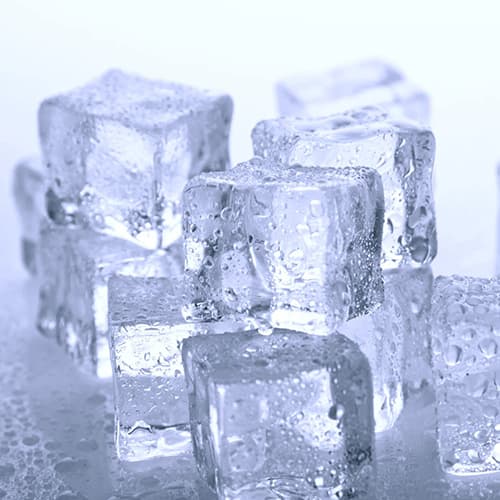
Full-Size Cubes:
Ideal for mixed drinks and spirits on the rocks. They melt slowly, minimizing dilution.
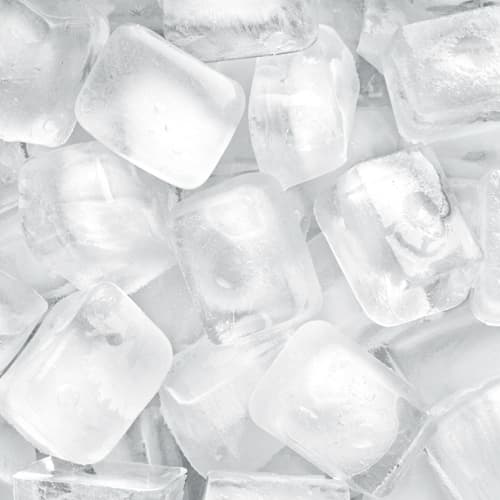
Half-Size Cubes:
Great for a wide range of beverages, these cubes are used to cool drinks quickly without excessive dilution.

Flake Ice:
Perfect for food displays, blended drinks, and healthcare. This kind of ice molds easily around different items, but melts quickly.
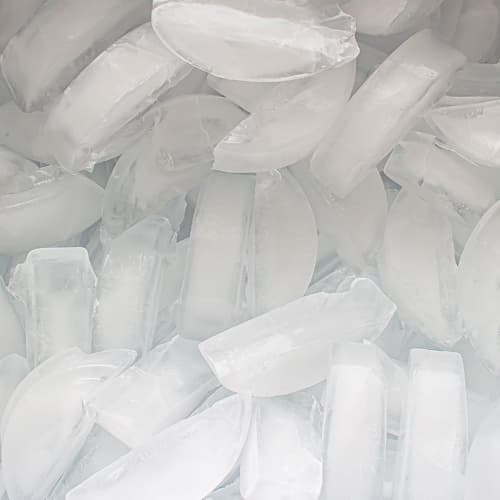
Sphere or Crescent Shape:
Unique to brands like Hoshizaki, these shapes are both functional (slow melting) and visually appealing.
Leading Brands in the Ice Maker Market
Finally, let’s take a quick look at the brands you should be considering when choosing your ice maker. There are dozens of brands out there, but you need to look at reliability, customer support, parts availability, and overall customer service ratings. For that reason, our top three brands are:

Manitowoc
Known for their innovative designs and energy-efficient models, Manitowoc offers a wide range of ice makers to suit a varity of applications.

Hoshizaki
Renowned for their durability (and unique crescent ice shape), Hoshizaki ice makers are one of the most popular choices in the demanding food service and hospitality industries
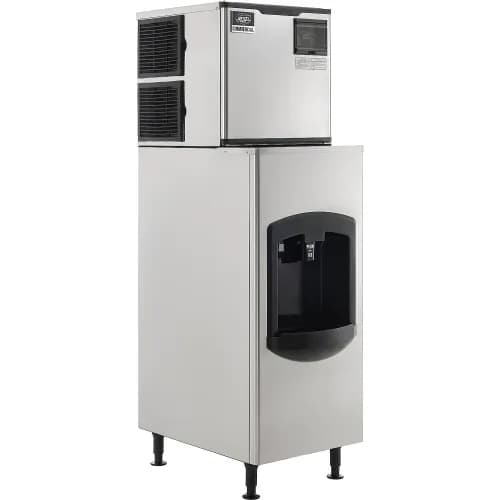
Nexel
As GI's house brand, Nexel offers competitive pricing without compromising on quality, making it an excellent option for budget-conscious buyers.
Investing in the right ice maker is crucial for any food service, hospitality, or facility management operation. So, take the time to research, compare options, and consult with the team of experts at Global Industrial if you need further assistance. With the info provided in this guide, you are well-prepared to find the perfect commercial ice making machine for sale.
The information contained in this article is for informational, educational, and promotional purposes only and is based on information available as of the initial date of publication. It is the reader’s responsibility to ensure compliance with all applicable laws, rules, codes and regulations. If there is any question or doubt in regard to any element contained in this article, please consult a licensed professional. Under no circumstances will Global Industrial® be liable for any loss or damage caused by your reliance on this article.
